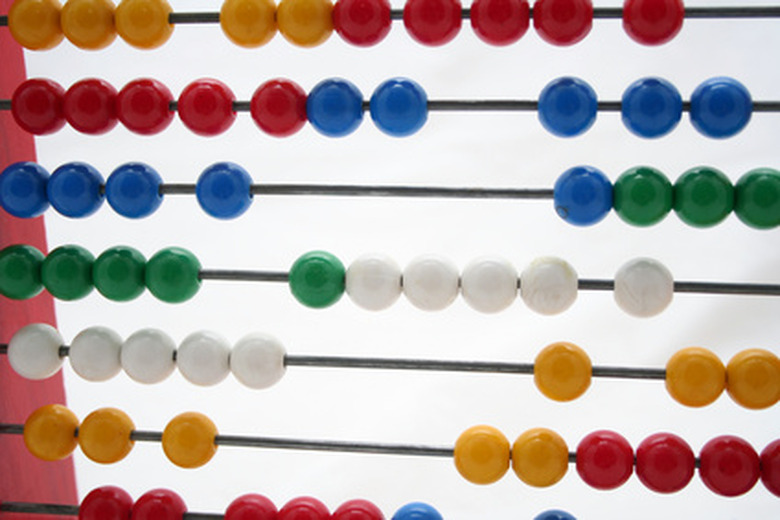Basic Concepts In Mathematics
Upon entering school, students begin to develop their basic math skills. Mathematics makes it possible for students to solve simple number based problems. Through the use of math, students can add up store purchases, determine necessary quantities of objects and calculate distances. While the discipline of math does become quite complex, there are some basic math skills that every student can and should learn during their math education program.
Number Sense
Number Sense
The first mathematics skill that students learn is basic number sense. Number sense is the order and value of numbers. Through the use of their number sense, students can recall that ten is more than five and that positive numbers indicate a greater value than their negative counterparts. Students commonly begin learning number sense skills in pre-school, and continue developing a more complex understanding of the concept throughout elementary school. Teachers introduce this skill to students by having them order digits and complete basic counting activities. They extend their knowledge by introducing the concept of the greater than and less than symbols and explaining what the use of each indicates.
Addition and Subtraction
Addition and Subtraction
The first mathematical operation that students learn is addition, followed closely by subtraction. Students begin studying these skills through the use of manipulatives, or physical tools that represent objects, as early as pre-school, and continue building their skills, adding and subtracting ever larger numbers through elementary school. When the skills are initially introduced, students perform rudimentary calculations using single digits. Later in their study, they practice applying these skills through the completion of story problems.
Multiplication and Division
Multiplication and Division
After developing a complex understanding of addition and subtraction, students move on to studying multiplication and division. Depending on the student's math achievement level, he may begin studying these operations as early as first grade. As with addition, students' study of these operations begins with single digit calculations. As they develop their multiplication and division skills, the problems become increasingly complex, involving larger numbers.
Decimals and Fractions
Decimals and Fractions
After students develop a strong understanding of number sense, they explore fractional numbers or numbers that lay between whole digits. Commonly this study begins in first grade with the exploration of basic fractions including ½ and ¼. After learning fractions, including how to add, subtract, divide and multiply non-whole numbers in fraction form, students study decimals. A strong understanding of fractions and decimals is vital, as students will use these non-whole numbers extensively as they continue their math study.
Cite This Article
MLA
Schreiner, Erin. "Basic Concepts In Mathematics" sciencing.com, https://www.sciencing.com/basic-concepts-mathematics-6159112/. 24 April 2017.
APA
Schreiner, Erin. (2017, April 24). Basic Concepts In Mathematics. sciencing.com. Retrieved from https://www.sciencing.com/basic-concepts-mathematics-6159112/
Chicago
Schreiner, Erin. Basic Concepts In Mathematics last modified August 30, 2022. https://www.sciencing.com/basic-concepts-mathematics-6159112/
